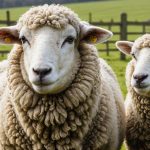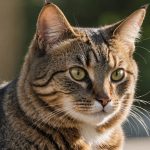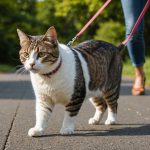Essential Grooming Techniques for Long-Haired Chihuahuas
Caring for a long-haired Chihuahua requires specific grooming techniques to ensure their coat remains healthy and free from tangles. Establishing a regular brushing schedule is crucial. It’s advisable to brush your Chihuahua’s fur at least twice a week. This frequent attention helps prevent matting, which can cause discomfort and lead to skin issues if not addressed.
When brushing, use a slicker brush or a metal comb. These tools penetrate the coat effectively, removing loose hair and detangling mats without causing trauma to the skin. Start brushing from the head, moving towards the tail, following the natural lay of the hair for the most gentle handling.
Sujet a lire : Essential Guide: Safely Trimming Your Newfoundland”s Webbed Feet to Prevent Infections
Bathing is another key aspect of long-haired Chihuahua care. Depending on their lifestyle, a bath every four to six weeks is usually sufficient. Use a gentle dog shampoo specifically designed for sensitive skin. Post-bath, ensure the coat is thoroughly dried using a low-heat hairdryer to prevent moisture from causing skin irritation or promoting fungal growth.
Implementing these grooming techniques consistently will help maintain your long-haired Chihuahua’s coat health, contributing to their comfort and overall well-being. Remember, regular grooming is not just about appearance; it’s essential for your pet’s quality of life.
Sujet a lire : Essential Signs of Parvovirus in Doberman Pinschers: Quick Action Steps for Pet Owners
Understanding Matting and Its Causes
For Chihuahua owners, addressing matting issues is vital to ensure your pet’s comfort and health. Long-haired Chihuahuas, in particular, are prone to matting due to the fine texture and length of their coats. Understanding the common causes of matting is crucial for effective Chihuahua coat maintenance.
Common Causes of Matting in Long-Haired Chihuahuas
- Friction: Areas such as the collar, harness, or under the legs are often subject to matting because of repeated movement and rubbing.
- Moisture: Water from baths or rain can lead the coat to mat more easily if not dried properly.
- Neglect: Infrequent grooming results in loose hair tangling with the fur’s natural structure.
Effects of Matting on Skin and Coat Health
Failing to address matting can expose your Chihuahua to various skin problems. Mats can cause skin irritations and even restrict proper airflow to the skin, potentially leading to infections. The lack of grooming can result in a dull-looking and unhealthy coat.
Signs Indicating Potential Matting Problems
- Clumped fur: Noticeable lumpy patches on the coat.
- Changes in behaviour: Discomfort when touched or groomed.
- Redness or irritation: Indications of skin distress beneath the matted areas.
Recognising these signs early can prevent small issues from becoming major health concerns.
Step-by-Step Grooming Procedures
Ensuring proper grooming begins with a comprehensive understanding of the grooming process, which can significantly enhance your dog’s comfort and health.
Preparing Your Dog for Grooming
The initial step in the grooming steps is creating a calm grooming environment. This involves gently introducing your dog to the necessary grooming tools—such as brushes, towels, and shampoos—ensuring they are clean and accessible. Proper handling and training can mitigate anxiety and establish a positive routine, making the grooming process smoother for both you and your pet.
Brushing Techniques
Correct brushing techniques are crucial in the grooming process. For dogs with varying coat types, best practices differ. Long-haired breeds often require daily brushing with detangling techniques, while short-haired breeds may need less frequent attention. To detangle without discomfort, start at the tips and work towards the roots. Factor in your dog’s lifestyle and activity level to determine the brushing frequency that best suits their needs.
Bathing and Drying Process
Choosing suitable shampoos and conditioners is vital in maintaining your dog’s coat condition. Employ proper bathing techniques—such as thoroughly working shampoo into the coat to prevent matting. When drying, you may choose between air-drying, towel drying, or using a dryer. Each method offers specific benefits depending on your dog’s coat type and comfort level.
Recommended Grooming Tools and Products
Maintaining your long-haired chihuahua’s luscious coat can be quite the task, but the right grooming tools can make all the difference. Essential tools include a slicker brush, which helps to detangle and remove loose hair, and a comb with both wide and narrow teeth for thorough grooming. To keep shedding under control, a de-shedding tool can be invaluable, ensuring your dog’s coat remains healthy and shiny.
When it comes to dog grooming products, focus on those that prevent matting. A conditioner designed specifically for long-haired breeds can keep their coat soft and tangle-free. A leave-in detangler spray is another excellent choice, offering additional protection against knots while making brushing a breeze.
Finding reliable grooming supplies is essential. Most pet stores stock the basics, but for a wider selection, consider visiting specialty grooming shops. Online platforms often offer the convenience of user reviews to guide your choices. Remember, investing in quality grooming tools and products ensures your pet remains comfortable and stylish, all while preventing common grooming issues. By choosing well, grooming becomes less of a chore and more of a bonding experience with your furry friend.
Preventative Care Strategies
Preventive care for your pet’s coat involves several vital strategies to ensure its health and shine. First and foremost is establishing a regular grooming schedule. Depending on your pet’s coat type, consistent grooming helps prevent matting, reduces shedding, and distributes natural oils for a healthier coat. For long-haired breeds, daily brushing is ideal, while short-haired breeds benefit from a weekly brush.
Nutritional factors also contribute significantly to skin and coat health. A balanced diet rich in omega-3 and omega-6 fatty acids can enhance coat shine and skin elasticity. Additionally, ensuring adequate hydration supports overall health, including the condition of your pet’s skin.
Another aspect of preventive care is the early identification and management of common skin issues. Recognising signs of irritation, such as redness or flakiness, can prevent more severe problems. Seasonal allergies, for instance, can lead to itching and discomfort, requiring timely intervention. Different coat types may be prone to specific concerns; therefore, understanding your pet’s unique requirements is crucial.
In conclusion, applying these preventive care strategies will not only maintain your pet’s coat but also promote their general well-being and comfort.










